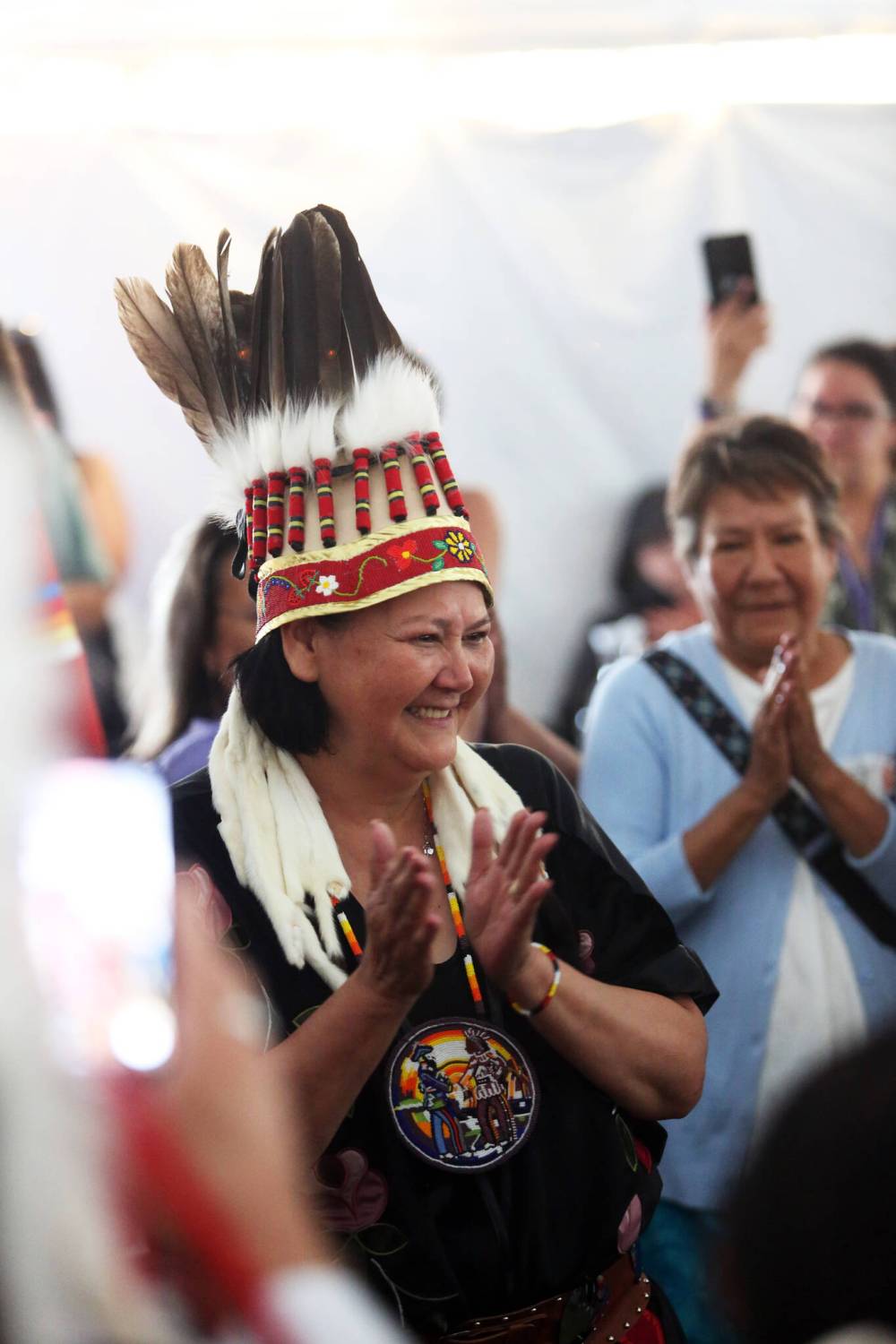The tragic death of Cathy Merrick on the steps of the Winnipeg courthouse Friday — while serving in her role as grand chief of the Assembly of Manitoba Chiefs — sent shock waves that reverberated well beyond our province.
In a stark and striking moment in our history, her sudden passing came literally in the service of Indigenous people as she was speaking to reporters about two major court decisions: the acquittal of corrections officer Robert Jeffrey Morden in the 2021 death of Indigenous inmate William Ahmo and the approval of a $530-million settlement for First Nations children in care.
The Free Press joins with all Manitobans — and particularly those in the Assembly of Manitoba Chiefs, Pimicikamak Cree Nation and the Merrick family — in mourning the death of a remarkable and respected leader.

MATT GOERZEN / BRANDON SUN FILES
Assembly of Manitoba Chiefs Grand Chief Cathy Merrick died suddenly last week.
Covering the gravity and wide-ranging impact of this event has been a central focus of our newsroom since Friday.
Responding to concerns that arose from that coverage is the focus of this column, which breaks new ground for us as it is jointly written by the Free Press editor and its award-winning Indigenous columnist.
The Free Press broke the news of Merrick’s death and subsequently published tributes, interviews, and shared information regarding multiple events that spoke to the significance of her passing.
We drew on the insights and community connections in the writings of our Indigenous columnist, who honoured Merrick’s legacy and his own experience with her, describing her as “a brilliant, ethical and strong leader. An ogimaa. A chief. A grand chief.”
As the oldest newspaper in Western Canada, the Free Press fully recognized the importance of this moment in our province’s history.
Our coverage included a photograph showing the rush of medical assistance to the grand chief during what it is thought to be the final moments of her life.
A picture is worth a thousand words, but in this case, many of the words we heard described it as disrespectful, traumatizing and dishonourable.
We heard those words and we listened to those words, by first changing the presentation of our online coverage and then dialing back the image’s prominence in our subsequent print edition.
But we did not do as our Indigenous columnist initially advised, which was to remove the photograph.
Guidelines
As per the Canadian Association of Journalists’ ethical guidelines, news agencies must report news factually and promptly, “never distort the contents of news photos or video,” be “complete and provide context when photographing or recording subjects” and “treat all subjects with respect and dignity.”
When it comes to “respect and dignity,” the guidelines further advise: “Give special consideration to vulnerable subjects and compassion to victims of crime or tragedy. Intrude on private moments of grief only when the public has an overriding and justifiable need to see.”
Based on those guidelines, reporting on the grand chief’s sudden death on the steps of the law courts was absolutely newsworthy.
To ensure Manitobans had quick access to information they can trust, we pressed resources inside and outside our newsroom into action.
We were the first to publish the news, hours ahead of other media, including two images from the day: one of Merrick speaking with reporters shortly before her collapse and one following her collapse that did not include her face but bore witness to the shock of onlookers and the rush of those desperately trying to save her.
As Manitoba’s news messenger since 1872, the Free Press knows full well the act of informing can sometimes be perceived as infuriating — even inciting.
Adding to the hurt the Indigenous community has already felt from the seismic events of recent headlines was never our intention.
Sincere apology
Over the weekend, Indigenous voices inside and outside our newsroom were again consulted. We reconsidered the requirements of reconciliation — in particular our community’s experience of ongoing violence to Indigenous women.
And to the extent that it can help healing, we have ensured the photojournalism that became such a flash point is no longer part of our coverage of this story.
To those who were upset and traumatized by the photo, you have our sincere apology.
To those who believe we have taken a backward step in our commitments to reconciliation, please know that we resolve to do better, to work more closely, to listen more.
The Free Press, as always, is committed to being a newspaper for all Manitobans.
paul.samyn@freepress.mb.ca
niigaan.sinclair@freepress.mb.ca

Niigaan Sinclair
Columnist
Niigaan Sinclair is Anishinaabe and is a columnist at the Winnipeg Free Press.

Paul Samyn
Editor
Paul Samyn is the editor of the Free Press, a role which has him responsible for all this newsroom produces on all platforms.
Our newsroom depends on a growing audience of readers to power our journalism. If you are not a paid reader, please consider becoming a subscriber.
Our newsroom depends on its audience of readers to power our journalism. Thank you for your support.